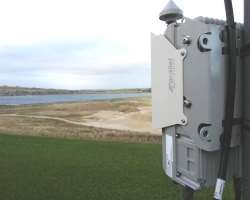5G RuralFirst: A case study in rural telecom network expansion

Despite significant strides the telecom industry has made in terms of technology and reach, the spread of network in rural areas remain the last frontier for the telecom industry.
This is true for Nigeria as well. Though the teledensity is continuously increasing, rural telephony continues to be a challenge. It is crucial to bridge this gap to ensure that all citizens are able to leverage the benefits of connectivity. This is also important for the overall social and economic growth of the country.
There are many reasons why the service providers typically shy away from expanding the networks in the rural segment. The most prominent reason is the low Average Revenue Per User (ARPU). Coupled with low ARPU, the cost of setting up and managing a network in rural areas is also higher. Low population density, difficult terrain further add to the challenge of providing a robust communications network in the country's hinterland.
It is then not surprising that, typically, the attitude towards rural expansion is that people in those areas need the basic services first, which maybe upgraded later depending on the returns to provide better technologies. What it means that telecom service providers would use the oldest generation technology available to expand in the rural areas first given the many infrastructural gaps and difficult terrains in those areas.
This approach is fundamentally flawed as it means investing in the older generation technology which would soon be obsolete. When it comes to new generation technologies like 4G and 5G, the urban areas get priority because customers in these areas are generally believed to have a better-paying capability.
The service providers need to provide a better solution to the rural areas as it opens up new avenues of economic and social growth. Besides, adding new subscribers is sure to benefit them in the long run.
In a way, when it comes to network expansion in rural areas, telecom companies face both technological as well as commercial challenges. It, therefore, needs a solution that successfully addresses these two challenges.
The Solution
A recent initiative by the British government in association with telecom players and other technology solution providers probably holds the key for successful rural network expansion. Named 5G RuralFirst, the initiative explores new network deployment strategies for the rural areas and promises to provide new business models for the rural community.
The Vision: It is an attempt at re-imagining the mobile or cellular infrastructure and demonstrating that 5G network can be deployed easily and cost-effectively to serve a range of enterprises, community or even private network beyond our cities. 5G RuralFirst project is also an attempt at realizing that 5G is not just an evolution of 4G. It is a new and different generation with new ideas, new technologies, new strategies, and new business models.
The Technology: The project is using Parallel Wireless’ – one of the collaborators in the RuralFirst project – All G approach to show that telecom operators can deploy all generation networks (2G, 3G, 4G and 5G) on the same telecom network infrastructure helping the telcos to be future ready without having to spend a fortune in shifting from older generation to newer generation technology.
The project is using Parallel Wireless’ HetNet software platform to disaggregate hardware and software, thus creating a unified architecture that can operate with 2G, 3G, 4G, and 5G systems.
This main strategy of the technology is to use the abstraction of RAN and core network to run on a commercial off-the-shelf server and resulting in an embedded network that allows interoperability with RAN equipment from other vendors. This further enables a managed evolution and continuous upgrade of the network.
The trial: As part of the 5G RuralFirst project, this technology is being used to demonstrate a cost-effective way to provide high-speed connectivity in low-ARPU regions. A trial of this is being conducted in three locations – North Scotland in the Orkney Islands, and Harper Adams and Somerset in rural England.
For the trials, HetNet Gateway was first set up in Orkney islands. Once the initial set up was completed, a connection was made to the Datavita core near Glasgow. After that, the HetNet Gateway was unplugged and driven back 200 miles to Glasgow and reconnected to the new housing at the Datavita data centre at Glasgow. The trial establishes that in rural and remote areas, a dynamic and shared spectrum can make a real difference.
A number of use cases, including Internet of Things (IoT) connectivity in fish farms; supporting tourism with mobile connectivity on bus routes; augmented reality apps at World Heritage sites like the 4,000-year old Ring Brodgar standing stones are currently being tested as part of the trial. All these are sure to increase jobs and open new revenue-generating options for people in rural areas.
Conclusion
When it comes to expanding the network or deploying a new generation technology in rural areas, cost becomes a big hindrance. The 5G RuralFirst project undertaken by the British government busts a number of myths about rural telecom expansion as well as throws up solutions which promise to make it easier for service providers to provide new and latest technologies in difficult-to-reach areas.
